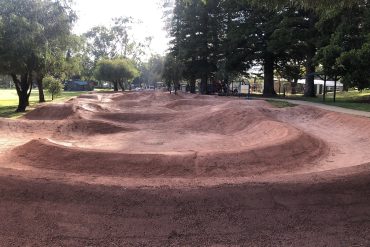Hop into Fun: Drawing Easter Eggs with Your Little Bunnies!
Welcome, lovely parents, to your go-to guide for drawing an Easter egg extravaganza with your kiddos! Whether it’s rain or shine this Easter season, gathering around the table to draw and decorate Easter eggs can be a heartwarming and engaging activity for the whole family. We’re here to guide you through each step, ensuring that this craft becomes a memorable tradition in your household.
Why Drawing Easter Eggs is Egg-ceptional Fun!
Drawing Easter eggs isn’t just about keeping the little ones busy. It’s about igniting creativity, spending quality time together, and creating festive decorations that can brighten up any corner of your home. Plus, this activity is egg-cellent for enhancing fine motor skills and color recognition for younger children.
Materials You’ll Need
- Paper: Get your hands on some good-quality drawing paper. If you’d like to keep these artworks for years to come, consider using acid-free paper.
- Pencils: Start off with a simple pencil to sketch out your designs. No need for anything fancy, just something that does the job!
- Erasers: Mistakes are just part of the fun! Have erasers ready for any little slips.
- Coloring Supplies: This is where the real magic happens! Crayons, markers, watercolors, or colored pencils – pick your favorites or mix and match!
- Decoration Extras: To make your Easter eggs pop, consider adding glitter, stickers, or even some ribbon.
Step-by-Step Guide to Drawing Your Easter Egg
Time to dive into the egg-citing world of drawing! Here’s how you can create your very own Easter egg masterpiece:
1. Sketch Your Egg
Begin with a simple oval shape. Remember, eggs aren’t perfect, and that’s what makes them unique! So don’t worry if your oval isn’t mathematically precise. If you’re drawing with young children, you can create the initial shape for them to decorate.
2. Add Patterns and Designs
This is where creativity takes flight! Encourage your children to think of different patterns or designs. Stripes, polka dots, zigzags, or even little bunnies and chicks – anything goes. The wackier, the better! Provide examples or create pattern templates if guidance is needed.
3. Bring in the Colors
Choose your coloring tools and start bringing your designs to life. Discuss with your children what colors they think embody the spirit of Easter or just let them choose whichever colors spark joy. It’s a great chance to learn about primary and secondary colors too!
4. Finishing Touches
Add the glitter, the stickers, or any other decorative elements you have. This will give your Easter egg that special touch of pizzazz. Don’t forget to place a sheet beneath your artwork to catch any glittery escapists!
Conclusion
With your Easter eggs now beautifully designed, it’s time to show them off! Pin them up around the house, stick them on the fridge, or turn them into greeting cards for friends and family. Drawing Easter eggs is more than just an activity; it’s making memories, unleashing potential, and enjoying the splendors of spring. So grab those crayons, unfurl that creativity, and let the Easter spirit shine through each stroke and dot. Happy drawing, everyone!

Unleash Your Inner Egg Artist: The Ultimate Guide to Drawing Easter Eggs
Greetings, inspiring parents and budding artists! It’s that wonderful time of year when the joy of Easter brings fresh blooms, cheerful gatherings, and a fantastic opportunity to crank up the creativity with your children. Delve into the delightful art of drawing Easter eggs with this comprehensive and cheerful guide!
Before we jump into the ‘eggciting’ steps of crafting your perfect Easter egg, let’s prepare you with five essential tips every parent should know:
Five Things Parents Should Know Before Drawing Easter Eggs
- Planning Ahead: Before starting this festive activity, make sure you have all your materials ready. This will allow you and your children to flow through your creative process without interruptions. Plus, it’s a good idea to cover your workspace with old newspapers or a tablecloth for an easy cleanup.
- Design Inspiration: Gather some design ideas in advance. Flip through magazines, search online, or check out art books from the library. This will get your kids excited and thinking about their own designs before they even start.
- Practice Makes Perfect: If it’s the first time your children are drawing Easter eggs, let them practice on scratch paper. It’s a great way to warm up and feel more confident before creating the final piece.
- Setting Realistic Expectations: Encourage children, especially younger ones, to enjoy the process rather than focus solely on the end result. Let them know that every egg they draw, no matter the outcome, is special and full of character.
- Emphasizing Creativity Over Perfection: Remind your little ones that there’s no right or wrong way to decorate an Easter egg. Whether it’s abstract splatters or intricate patterns, every creation is a masterpiece.
With those tips in the basket, it’s time to roll up your sleeves and start drawing. Follow this simple guide, and soon your Easter eggs will be ready to hatch into a vibrant display of imagination and color.
Sketch Your Egg
Every masterpiece begins with a single line. Start your drawing session with a simple oval, keeping in mind that an egg’s beauty lies in its uniqueness. It’s perfectly okay if your shape has a few quirks – it simply adds character. If your little ones are struggling, feel free to lend a hand with the initial shape.
Add Patterns and Designs
Now, let the waves of creativity surge as you and your children brainstorm and add patterns to your egg’s sketch. Mix traditional Easter symbols with personal style to make each egg one-of-a-kind. Offer some pattern ideas while encouraging your kids to unleash their unique visions.
Bring in the Colors
When it’s time to color, invite your children to explore a palette of pastel shades, bright hues, or whatever colors they’re drawn to. This is a splendid time to explore concepts like color mixing and blending techniques. Remember, there are no rules – just colorful fun!
Finishing Touches
The final step is to sprinkle your Easter egg drawing with a dusting of sparkle and whimsy. Employ glitter, stickers, or sequins to bring a tactile dimension to your piece. Encourage kids to think about textures and how they enhance the visual appeal.
Concluding, once your family’s collection of Easter eggs is completed, take a moment to bask in the pride of creation with your children. These drawings now hold cherished memories as well as an abundance of artistic growth and joy. Make sure to display their works of art for all to see, and who knows, the Easter bunny might even leave an extra treat for such impressive efforts!
See more great Things to Do with Kids in New Zealand here. For more information see here
Disclaimer
The articles available via our website provide general information only and we strongly urge readers to exercise caution and conduct their own thorough research and fact-checking. The information presented should not be taken as absolute truth, and, to the maximum extent permitted by law, we will not be held liable for any inaccuracies or errors in the content. It is essential for individuals to independently verify and validate the information before making any decisions or taking any actions based on the articles.




